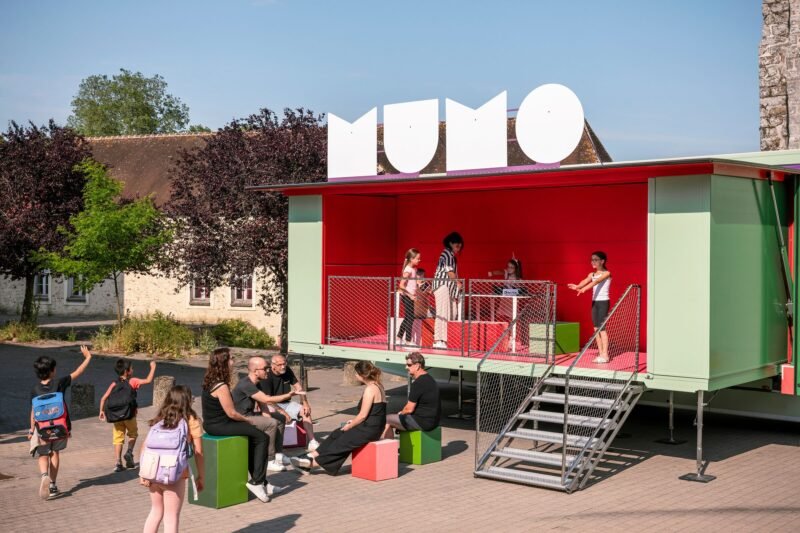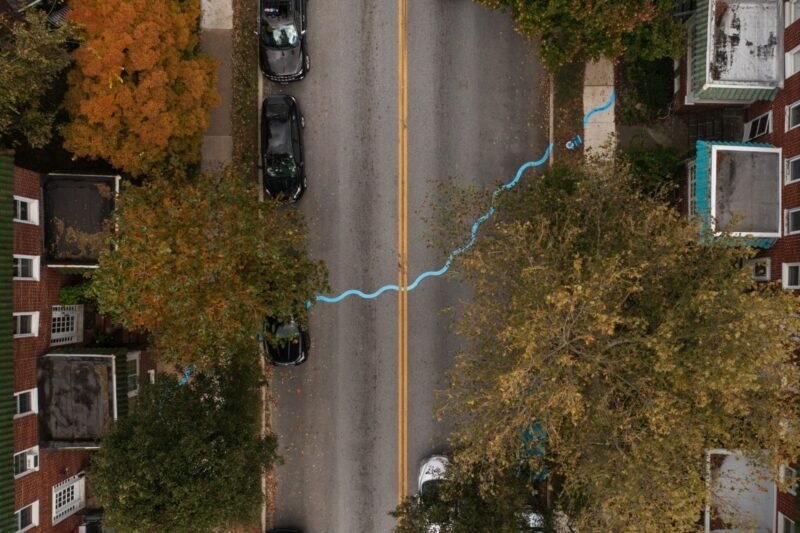Pop-Up City As Museum
 If the recent hype concerning Banksy’s film ‘Exit Through the Gift Shop’ provoked any discussion (which it obviously did), it was about the integrity of the documentary itself. Was this really a documentary or is it a hoax? Does Mr. Brainwash really exist? Or is it an alter ego of Banksy himself? However, one of the things that wasn’t so much discussed was the film’s relation to the street art it presented. Why did Banksy actually make a film about street art? Why did he switch from one art form into the other? Banksy himself claims:
If the recent hype concerning Banksy’s film ‘Exit Through the Gift Shop’ provoked any discussion (which it obviously did), it was about the integrity of the documentary itself. Was this really a documentary or is it a hoax? Does Mr. Brainwash really exist? Or is it an alter ego of Banksy himself? However, one of the things that wasn’t so much discussed was the film’s relation to the street art it presented. Why did Banksy actually make a film about street art? Why did he switch from one art form into the other? Banksy himself claims:
“It seemed like a good idea to start video-ing the work, I mean, we had to, because a lot of it was starting to disappear the next day (…) I guess Thierry showed up at a time when I realized that the reaction to this stuff was, you know, one of the most interesting things about it. ’Cause for me it’s an important part of the job to run away as soon as we done it. But at least with Thierry we had someone hangin’ ‘round afterwards who could capture some of it.”
Banksy’s statement that it would be necessary in some ways to ‘capture’ the street art he made, because it was ‘disappearing’ raises some interesting questions about the significantly different ways of public exposure between these two art forms and how this is connected to its presence in the city. On the one hand, street art is viewed as the public and, I might add, pop-up, art form par excellence — everyone who walks by can accidentally stumble upon an artwork and become a spectator and the art work usually vanishes after a few days. Film, on the other hand, is intended to be watched in the cinema, for which only the ones who can afford it pay for a viewing in a private space and it can be re-watched over and over again. The division that is consequently created here is one that is noticeable in other realms as well.
When I started googling street art and I came across a website that launched the new iPhone ‘All City’ app. This app is supposed to be ‘your hand-held guide to street art’ and lets the user ‘navigate new areas and explore the best art abroad’. This app is one of the features of the new, so-called ‘media city’, a city which is not accessed by walking, touching, seeing or hearing, but through a digital interface that provides the user with a pre-fabricated knowledge and interest in what the city has to offer. This app, in combination with the previous filmic desire to ‘capture’ street art, posits a problematic contradiction; it seems that the art-filled streets are slowly turning into a museum. The question here becomes: To what extent is street art still ‘street’ art when one’s attention has to be ‘guided’ to it, either through a film or through an iPhone app, both of which are only accessible to a select group of (quasi-wealthy) people? Both of these trends form one important characteristic that is not uncommon in a neoliberalist, capitalist world; the privatization of the public which produces a division between the wealthy and the poor. ‘Exit Through the Gift Shop’ acknowledges this:
“Street art has become a hot commodity. Now, no serious contemporary art collection would be complete… without a Banksy.”

But… Don’t Panic! Banksy wants to fight this! He tells Thierry: “right, you have the footage. You can tell the real story about what this art is about.” But what is the real story about street art? Is street art about footage? About capturing what was only temporarily there? About privatizing what was formerly accessible to all? About the city becoming a museum in which ‘the best art’ is pre-defined by some software developers? I think not. In a society dominated by a neoliberalist government who tries to cut the art and culture subsidies and privatize everything they come across, it is extremely important to have left some public spaces that are accessible and in which art isn’t static and eternal. But when even one of the most renowned street artists succumbs to the will of capitalism, it is up to us to leave the streets alone and quit transforming the pop-up city into a museum.



